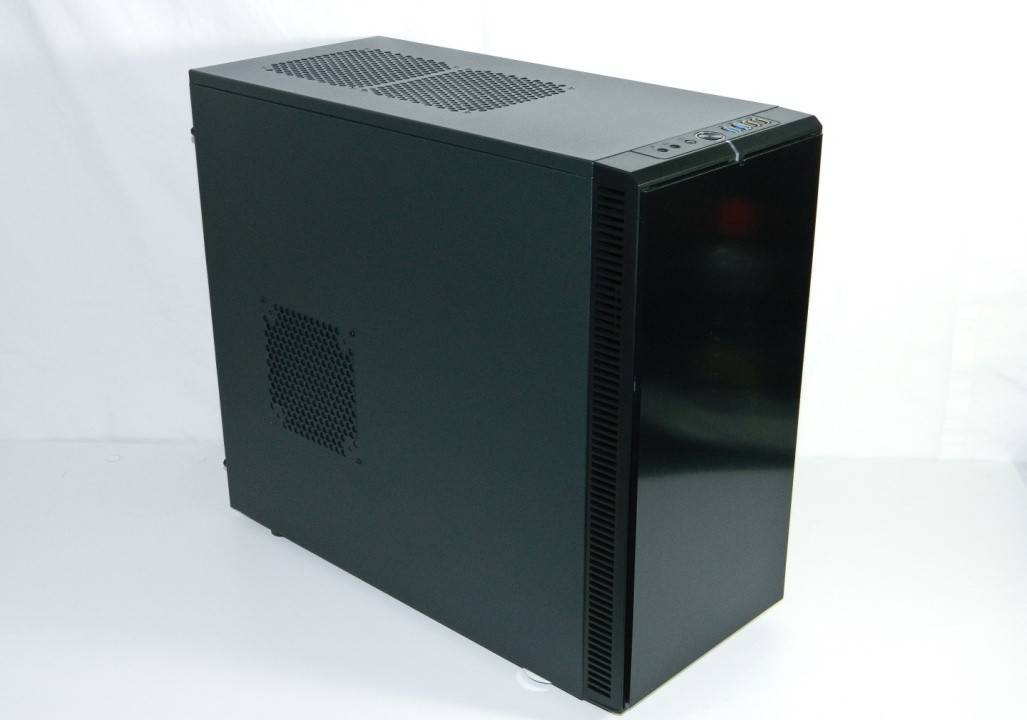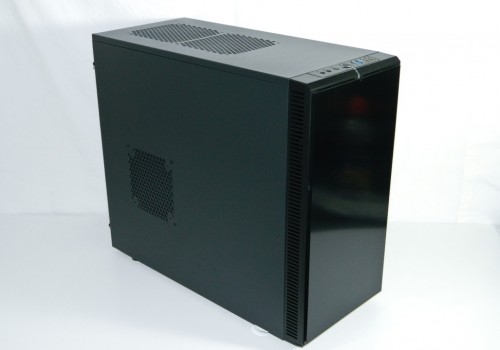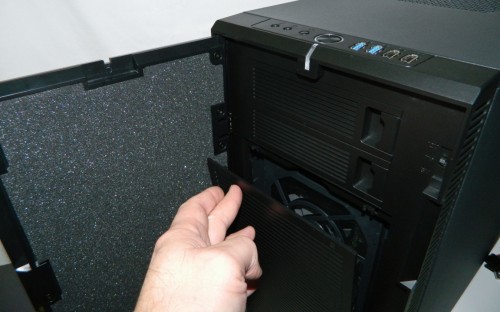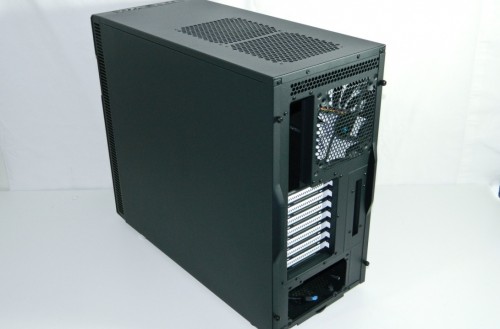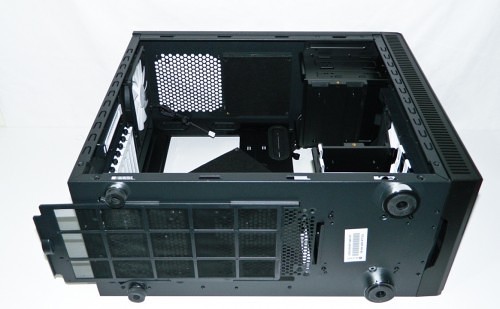Inspecting the Fractal Define R4 – Exterior Inspection
In the spirit of innovative ideas, I broke down the case inspection into subsections in order to properly itemize features. It should be easier to digest plus it should help you decide if the enclosure fits your particular needs.
Front and Top
The Define R4 really does have a nice even jet black finish all around. The metal panels are quite sturdy which helps all the joints and seams fit together nicely. The front door has an especially nice finely brushed black finish with equally well machined beveled edging that anyone will appreciate. It blends well with the vented front bezel chassis which also shares a similar beveled edging.
You can see the 120/140mm side panel fan port and two top 140mm fan ports which come covered with vent covers. Why? For creating a wind tunnel effect. More on that later. The ports work with both 140mm and 120mm case fans. Having 120mm holes allows users to pick from a selection of great fans already out on the market or reuse the ones they already have. Finally, all audio, USB, power and reset buttons are located within the bezel frame up top.
Bezel Front
The door smoothly swings open to reveal a familiar vented design seen on many a pro server type enclosures. There’s only two sturdy 5.25″ bay covers that release or lock back in to place with a single thumb lock. The top slot is prepped for one unit. To the right of the bays is a 3-speed fan control that supports three fans. However, we’ve had good luck using splitters for four. Fractal leaves it up to you to connect the fans.
There is a discreet vented door within the front bezel that is hinged at the bottom. Press the two top corner tabs to release the spring loaded locks which allows the door to swing down. Behind it is also a hinged, removable filter that slides right out for easy cleaning. Further behind that is a tooless dual fan bay with space for stacking up to two 140mm cooling fans. The ease of access and maintenance of the fans and filters is simply fantastic.
Back
Looking at the back of the enclosure, you get a better understanding of the chassis’ width. White PCI slot covers and 140mm fan blades contrast surprisingly nicely. I especially like that the fan has plain white untextured fan blades not that you can see them well. But golf ball textures don’t make a fan cool.
Notice the lack of water cooling ports? That’s because the chassis is built to work better for supporting internal custom and all-in-one systems. And honestly, I haven’t seen an external cooling system that would blend well with this design.
Bottom
Finally, the bottom of the case features rubber feet and a removable vent. The feet will keep the case from sliding around and help absorb any vibrations. They put about 3/4″ space between the case and supporting surface so the two bottom vents allow some air movement for your PSU and/or any case fan you may add. Simple and logical.

